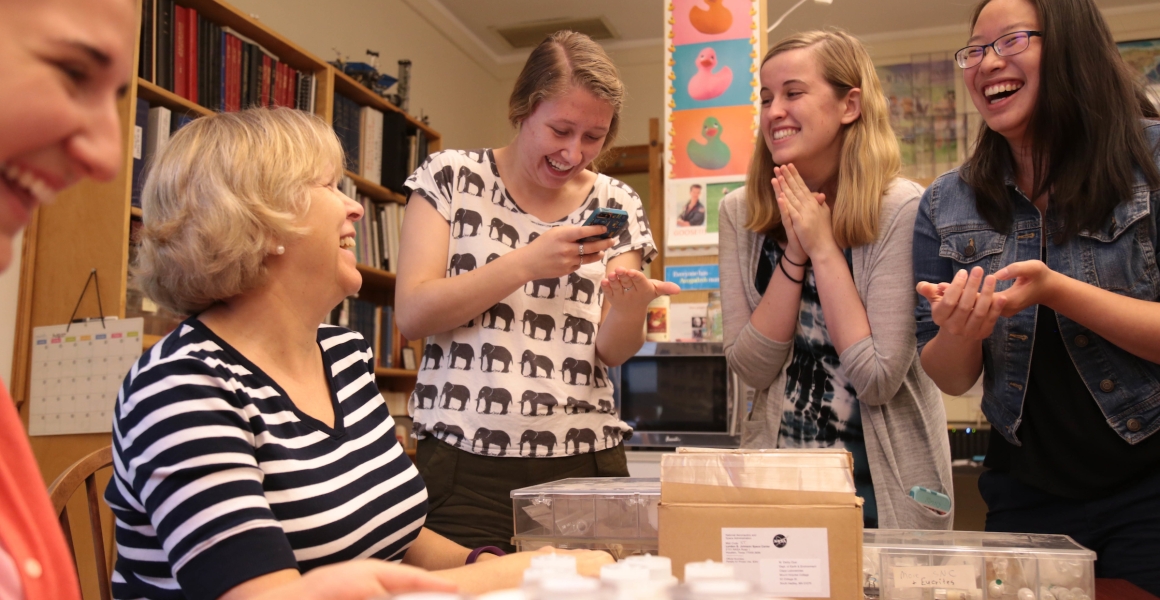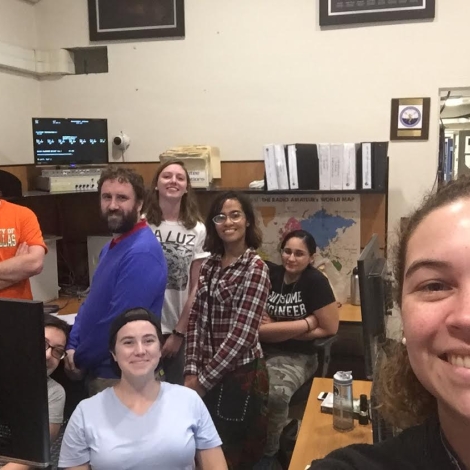ASTR-100 Stars and Galaxies
Discover how the forces of nature shape our understanding of the cosmos. Explore the origin, structure, and evolution of the earth, moons and planets, comets and asteroids, the sun and other stars, star clusters, the Milky Way and other galaxies, clusters of galaxies, and the universe as a whole.
ASTR-102 Solar Systems
Travel through our solar system using results of the latest spacecraft. Explore the origins of our worlds through the study of planet formation, meteorites, asteroids, and comets. Discover the processes that shape planetary interiors, surfaces, and atmospheres. Compare our solar system to others by learning about newly discovered exoplanets. Trace the conditions that may foster life throughout the solar system and beyond.
ASTR-104 Planet Earth
This course traces the origins of the universe, our solar system, and Earth and provides an introduction to the field of planetary science. It follows the evolution of terrestrial planets and asteroids through geologic processes. Topics include planetary origins, atmospheres, interiors, and magnetic fields; plate tectonics; volcanism, weathering, earthquakes, faults and folding on terrestrial planets; distribution and limitations of resources on Earth and other bodies; and the search for the origins of life.
ASTR-105 The Sky
A hands-on introduction to observing and understanding the extraterrestrial sky. Daily and annual motions of the sun, moon, planets, and stars; celestial coordinate systems; apparent brightnesses and colors of the stars; time; calendars. Observations at the Williston Observatory with the unaided eye, visually with the eight-inch telescope, and by electronic camera with computer-controlled telescopes.
ASTR-223 Planetary Science
This intermediate-level course covers fundamentals of spectroscopy, remote sensing, and planetary surfaces. Discussions will include interiors, atmospheres, compositions, origins, and evolution of terrestrial planets; satellites, asteroids, comets, and planetary rings.
ASTR-226 Cosmology
Cosmological models and the relationship between models and observable parameters. Topics in current astronomy that bear upon cosmological problems, including background electromagnetic radiation, nucleosynthesis, dating methods, determinations of the mean density of the universe and the Hubble constant, and tests of gravitational theories. Discussion of questions concerning the foundations of cosmology and its future as a science.
ASTR-228 Astrophysics I: Stars and Galaxies
A calculus-based introduction to the properties, structure, formation, and evolution of stars and galaxies. The laws of gravity, thermal physics, and atomic physics provide a basis for understanding observed properties of stars, interstellar gas, and dust. We apply these concepts to develop an understanding of stellar atmospheres, interiors, and evolution, the interstellar medium, and the Milky Way and other galaxies.
ASTR-295 Independent Study
ASTR-330 Topics in Planetary Science
In-class discussions will be used to formulate a set of problems, each designed to illuminate a significant aspect of the topic at hand. The problems will be difficult and broad in scope: their solutions, worked out individually and in class discussions, will constitute the real work of the course. Students will gain experience in both oral and written presentation. Topics vary from year to year.
ASTR-330MA Topics in Planetary Science: 'Mars'
This course will survey the past, present, and future of Mars exploration and science. We will focus on the evolution of Mars as a paradigm for terrestrial planets, with specific units on missions, formation, volcanism, impacts, glaciers and water, spectroscopy and mineralogy, climate, and issues pertaining to the possibilities of life on Mars. This is a discussion-based, interactive seminar with students and faculty reading current papers from the literature, supported by many outside speakers. Weekly writing assignments focus on critical thinking.
ASTR-335 Astrophysics II
This is a course in applied physics with the ultimate goal of describing how stars work. Topics include gravitation, stellar mass determination, stellar structure, stellar atmospheres, stellar evolution, and the physics of pulsating stars. We will approach each of these topics from fundamental concepts and we will work our way to a detailed understanding. On the way we will review the structure of the atom, radiative processes, and some basic principles of thermodynamics.
ASTR-352 Astrophysics III
Advanced course covering physical processes in the gaseous interstellar medium, including photoionization in HII regions and planetary nebulae, shocks in supernova remnants and stellar jets, and energy balance in molecular clouds. Dynamics of stellar systems, star clusters, and the viral theorem will also be discussed, along with galaxy rotation and the presence of dark matter in the universe, as well as spiral density waves. The course concludes with quasars and active galactic nuclei, synchrotron radiation, accretion disks, and supermassive black holes.
ASTR-395 Independent Study



